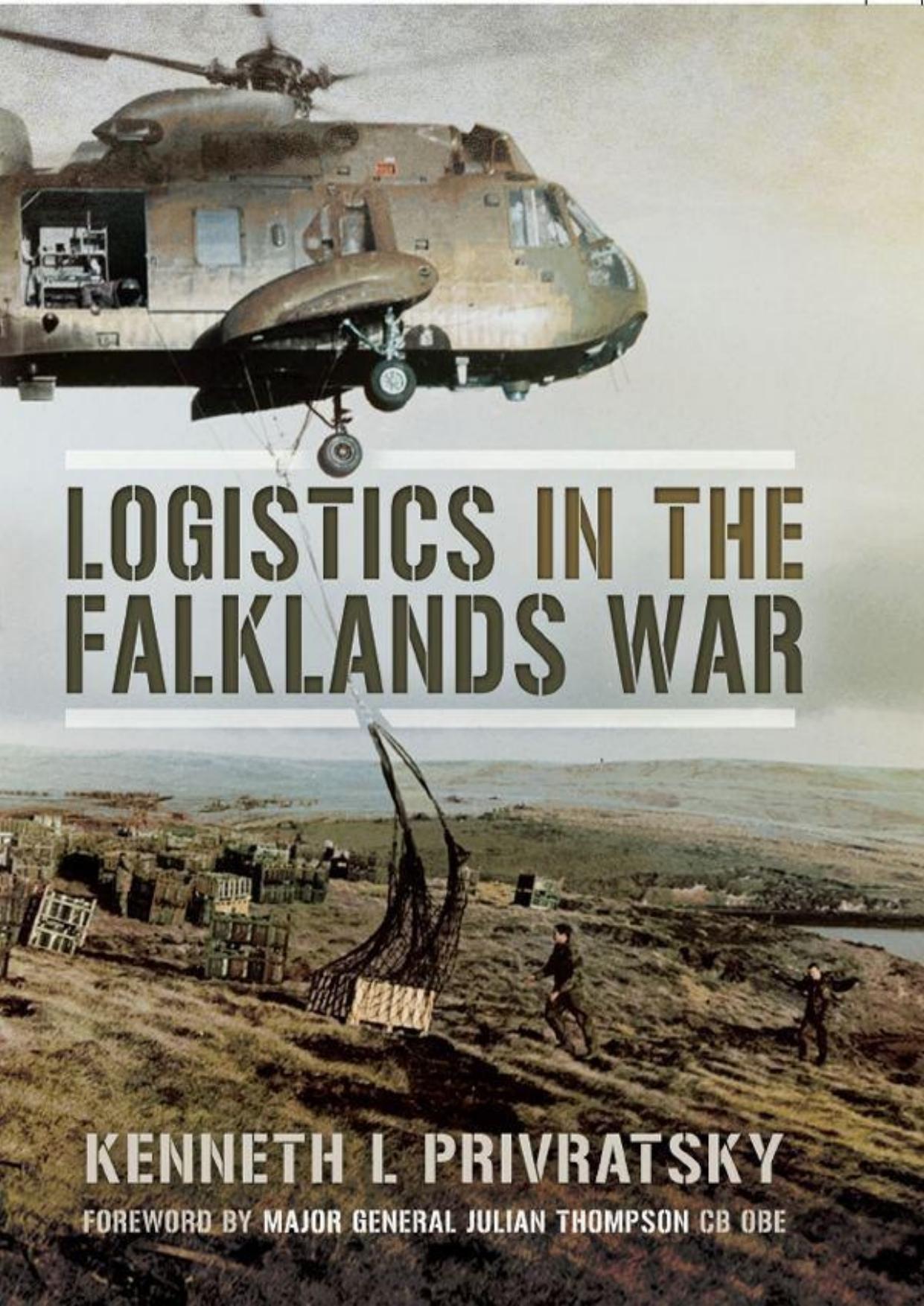Logistics in the Falklands War by Kenneth L Privratsky

Author:Kenneth L Privratsky [Privratsky, Kenneth L]
Language: eng
Format: epub, azw3, mobi, pdf
Publisher: Pen and Sword
Published: 2014-11-30T08:00:00+00:00
Chapter 8
More Forces and Challenges
When senior Task Force leaders met aboard Hermes at Ascension on 17 April, they agreed additional ground combat power was needed to supplement 3 Commando Brigade. Intelligence indicated that Argentine defenders on East Falkland already outnumbered Brigadier Thompson’s force by more than two to one. There certainly was no reason to believe the situation would have changed by the time the Brigade landed. There remained a good possibility, in fact, that ratios could change to disadvantage the British even more. Even assuming 3 Commando Brigade would be able to surprise the Argentines with their initial assault and establish a sufficient beachhead, taking the battle to Stanley would be quite a different matter. The British clearly needed more ground forces, if for no other reason than to keep several thousand of Brigadier General Menendez’s soldiers occupied as Thompson’s commandos punched through outlying areas to take Stanley. Accordingly, Admiral Fieldhouse returned to the United Kingdom from Ascension and set another brigade in motion toward the South Atlantic. That unit became 5 Infantry Brigade.
This was a very different organization from its counterpart 3 Commando Brigade. Formed only three months before with its primary mission as a reserve force for the defence of the United Kingdom, it had no commitment to NATO and claimed three combat units of battalion size. Two of these units were already moving toward the South Atlantic now but not as part of 5 Brigade: 2 Para and 3 Para, regarded as the Brigade’s premier fighting units, had been attached to 3 Commando Brigade, a standard military procedure for task organizing for battle to meet mission requirements. The only remaining organic combat unit was a battalion of Gurkhas. With about 700 soldiers in the 1st/7th Duke of Edinburgh’s Own Gurkha Rifles, this battalion was slightly larger than a parachute battalion and commando. These Nepalese soldiers were tough and proud. They claimed a reputation going back to the 1800s of striking fear in enemies with their curved kukri knives and battle cry ‘Ayo Gurkhali!’ (‘Here come the Gurkhas!’). Legend had it that they used those knives to behead their enemies and, as a result, enemy soldiers fled when they heard the Gurkhas were coming. British officials coordinated with the Nepalese government to get approval for the Gurkhas to deploy as part of the follow-on force.
That being granted, the MoD then attached two other battalions to 5 Brigade. The day-to-day duties of 1st Battalion Welsh Guards, the first unit to be attached, were as ceremonial guards at Windsor Castle. They had completed a training exercise in Kenya the previous winter, but their speciality was fighting from armoured personnel carriers. The Welsh Guards would now have to revert to being plain infantry for the Falklands War. The battalion had the benefit of being at full strength both in terms of men and equipment. For the first three months of 1982, it had served as the British ‘Spearhead’ battalion for contingencies before being replaced on rotation by 3 Para in April.
Download
Logistics in the Falklands War by Kenneth L Privratsky.azw3
Logistics in the Falklands War by Kenneth L Privratsky.mobi
Logistics in the Falklands War by Kenneth L Privratsky.pdf
This site does not store any files on its server. We only index and link to content provided by other sites. Please contact the content providers to delete copyright contents if any and email us, we'll remove relevant links or contents immediately.
| Africa | Americas |
| Arctic & Antarctica | Asia |
| Australia & Oceania | Europe |
| Middle East | Russia |
| United States | World |
| Ancient Civilizations | Military |
| Historical Study & Educational Resources |
Life of Elizabeth I by Alison Weir(2026)
The Invisible Wall by Harry Bernstein(1765)
Art of Betrayal by Gordon Corera(1401)
1916 in 1966 by Mary E. Daly(1231)
Thunderstruck by Erik Larson(1182)
The Decline and Fall of the British Empire, 1781-1997 by Piers Brendon(1096)
A Brief History of Britain, 1066-1485 by Nicholas Vincent(1009)
A Brief History of Britain, 1485-1660 by Ronald Hutton(978)
Guy Burgess by Stewart Purvis(971)
Mary, Queen of Scots by Weir Alison(961)
Henry VIII by Alison Weir(909)
The Last Lion 02 - Winston Churchill - Alone, 1932-1940 by William Manchester(908)
Lang Lang by Lang Lang(833)
1066 by Andrew Bridgeford(829)
Gimson's Kings and Queens by Andrew Gimson(811)
The Last Plantagenet by Thomas B Costain(810)
Coalition by David Laws(806)
London: A Biography by Peter Ackroyd(803)
Diana by Andrew Morton(785)
